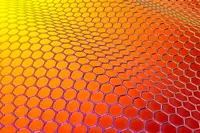 Traditionally, tantalum nitride has been used for the protective layer around copper wires in computer chips, but Stanford electrical engineer H-S Philip Wong says that using graphene to wrap wires could allow transistors to exchange data faster than is currently possible. He adds the advantages could increase in the future as transistors continue to shrink.
Traditionally, tantalum nitride has been used for the protective layer around copper wires in computer chips, but Stanford electrical engineer H-S Philip Wong says that using graphene to wrap wires could allow transistors to exchange data faster than is currently possible. He adds the advantages could increase in the future as transistors continue to shrink.
"Researchers have made tremendous advances on all of the other components in chips, but recently there hasn't been much progress on improving the performance of the wires," said Wong.
Tantalum nitride acts as an isolating material, keeping copper from migrating into the silicon transistors and rendering them non-functional. Graphene is claimed to serve a dual role; it isolates the copper from the silicon on the chip and also conducts electricity. Added to this, it is said to be eight times thinner than the thinnest layer of tantalum nitride required for the same function.
"Graphene has been promised to benefit the electronics industry for a long time, and using it as a copper barrier is perhaps the first realisation of this promise," Wong said.
Wong's team said that a graphene isolator would boost wire speeds from 4% to 17% compared to tantalum nitride in today's chips. But, as transistors and wires continue to shrink in size the benefits of graphene become greater. The engineers estimate that their technology could increase wire speeds by 30% in the next two generations, and are looking into techniques to grow graphene directly onto wires while chips are being mass-produced.
Author
Tom Austin-Morgan
Source: www.newelectronics.co.uk

